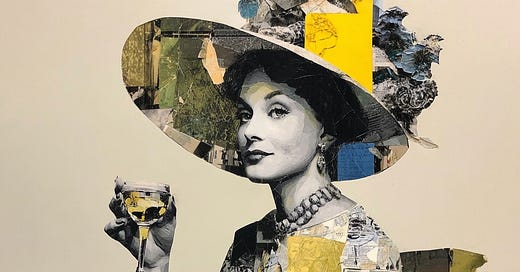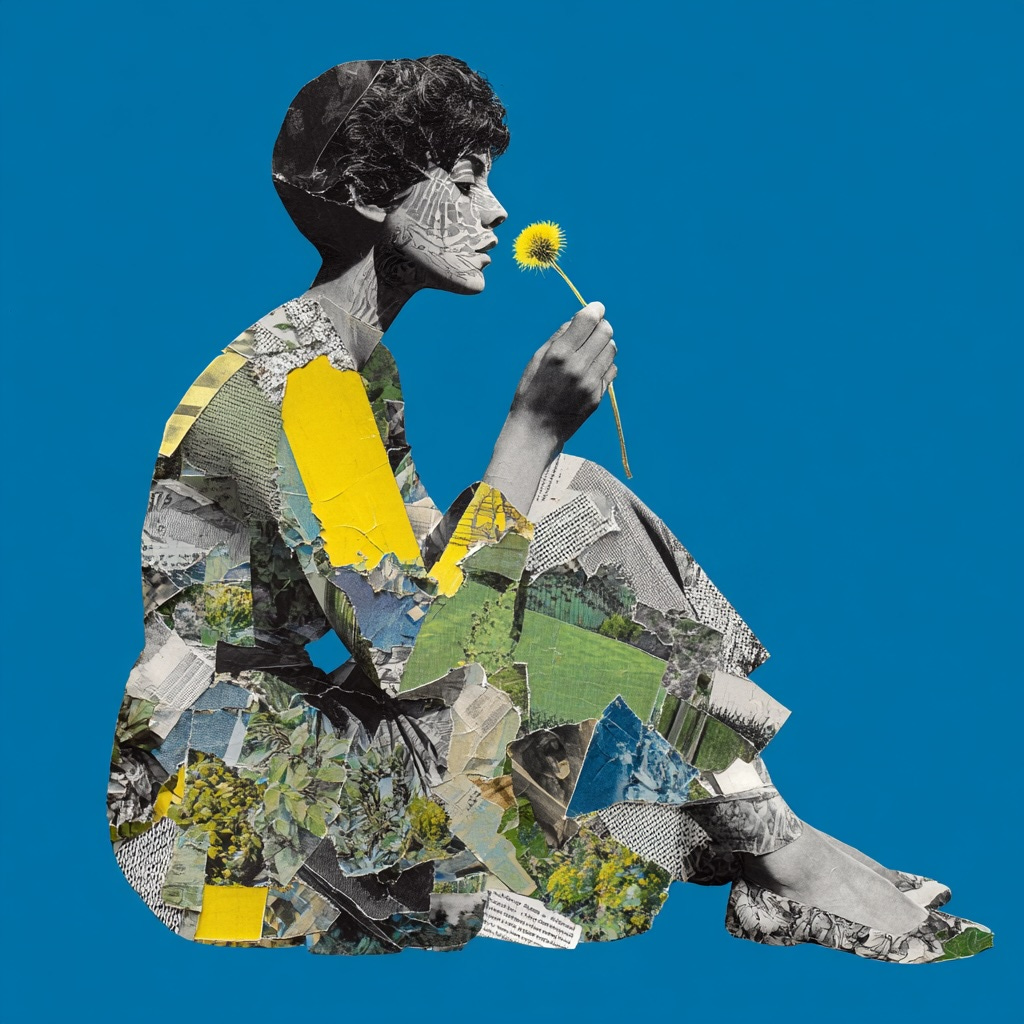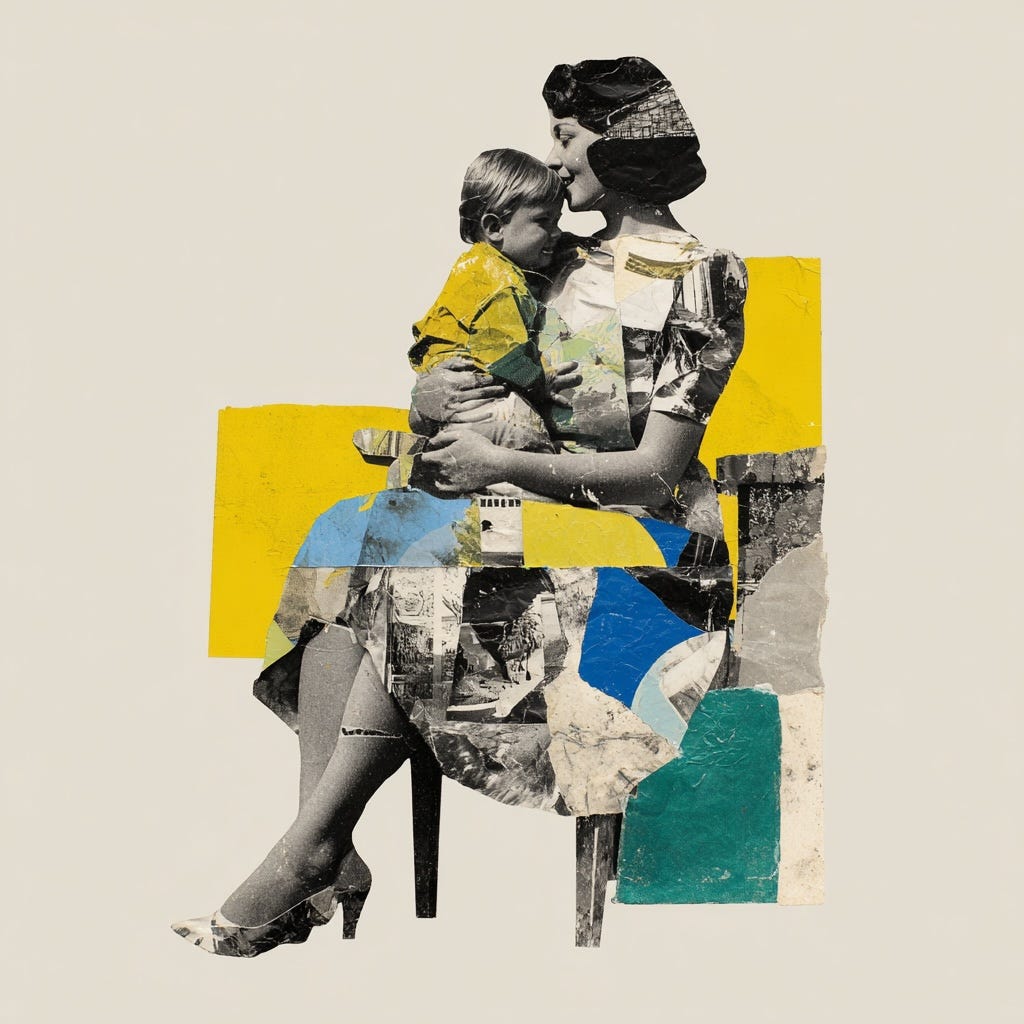#780 Artists Are Using This Magazine Trick to Create Stunning AI Art
How to Make Cut-and-Paste Collage Art Using AI Image Generators
Teaching AI to think like a collage artist... and the results are incredible #AIInnovation #ArtTech ✨ #AIArtDaily #CreativeAI #AIart
Hey there, 👋
Today we're building a visual story from scattered pieces of the world around us, like creating a memory from fragments of magazines, newspapers, and textures.
The Art of Layered Storytelling
Mixed media collage has roots stretching back to early 20th century artists who broke free from traditional painting by incorporating real-world materials into their work. These artists understood that sometimes the most powerful images come from combining unexpected elements rather than creating everything from scratch.
AI brings fresh possibilities to this time-honored technique, allowing AI artists to experiment with layered compositions and textural combinations that would take hours to assemble by hand.
Understanding the Elements
Creating compelling mixed media collages relies on three core components:
Primary Foundation: The base composition creates your visual anchor Your foundation sets the mood and determines how viewers will read your artwork. Strong foundations use clear focal points and balanced proportions to guide the eye naturally through the piece.
Artistic Elements: Different materials and textures build depth and interest Each element you add contributes to the overall narrative. Paper creates smooth transitions, while rougher textures add energy and movement. The interplay between clean magazine cuts and organic shapes creates visual tension that keeps viewers engaged.
Context & Atmosphere: Color choices and spatial relationships enhance emotional impact Your color palette becomes the emotional language of your piece. Limited palettes create unity and focus, while the way elements overlap and interact builds the three-dimensional quality that makes collages feel alive and touchable.
The Power of Intentional Contrast
The magic of mixed media collage lies in the deliberate clash between different visual languages. When you combine photographic realism from magazine clippings with abstract shapes and textures, you create a visual conversation that speaks to how we actually experience memory and emotion. Our minds don't store experiences as perfect photographs but as layered impressions mixing clear details with fuzzy feelings.
Finding the right balance means knowing when to let elements blend harmoniously and when to create sharp contrasts that demand attention.
Style Approaches
Different artistic approaches create distinct results:
Geometric approach emphasizes clean lines and structured compositions This method uses precise cuts and careful alignment to create order from chaos. Sharp edges and mathematical relationships between elements build a sense of control and intentionality that feels modern and sophisticated.
Organic approach creates flowing, natural compositions Here, torn edges and overlapping shapes mimic the way memories and experiences actually layer in our minds. Soft transitions and curved elements create movement that feels emotional and spontaneous rather than planned.
Dimensional approach delivers physical depth and tactile quality By building up layers and adding three-dimensional elements, this style makes flat images feel sculptural. Shadows and raised surfaces create rich textures that invite viewers to imagine touching the artwork.
Want to turn these ideas into actual art? Let's get down to the prompts…
The Prompts
Here's how to achieve these striking mixed media collages.
Contemplative Dandelion Portrait
An illustration of a sitting woman holding a dandelion. A cut-and-paste collage style made from magazine clippings in black, white, yellow, blue, green, and grey on a solid background, using mixed media with 3D elements and paper mâché, textured surfaces, layered composition, vintage magazine aesthetic, dimensional shadows
Sophisticated Wine Moment
An illustration of a sitting woman wearing a large hat and holding a glass of wine. A cut-and-paste collage style made from magazine clippings in black, white, yellow, blue, green, and grey on a solid background, using mixed media with 3D elements and paper mâché, raised textures, editorial magazine style, sophisticated color blocking
Tender Mother and Child
An illustration of a sitting woman holding a child. A cut-and-paste collage style made from magazine clippings in black, white, yellow, blue, green, and grey on a solid background, using mixed media with 3D elements and paper mâché, emotional depth, layered storytelling, warm textural elements
Prompt Breakdown
Let's break down the key elements that make these collages work:
"cut-and-paste collage style made from magazine clippings"
Creates the authentic fragmented aesthetic of traditional collage
Ensures varied textures and print qualities within the composition
Establishes the handmade, assembled-by-hand feeling
"black, white, yellow, blue, green, and grey on a solid background"
Limits the palette for visual unity while allowing sufficient variety
Creates intentional color relationships that feel curated rather than chaotic
Provides enough contrast for clear focal points and visual hierarchy
"mixed media with 3D elements and paper mâché"
Adds dimensional quality that makes flat images feel sculptural
Creates realistic shadows and surface variations
Brings tactile authenticity to the digital creation process
Tweaks to Try
For Contemplative Dandelion Portrait:
Replace "dandelion" with "butterfly," "flower crown," or "origami bird"
Add "weathered textures" or "vintage patina" for aged appearance
Try "sepia undertones" instead of the standard color palette
For Sophisticated Wine Moment:
Swap "wine glass" for "teacup," "book," or "vintage camera"
Experiment with "art deco influences" or "1960s fashion magazine style"
Add "metallic accents" or "gold leaf details" for luxury feel
For Tender Mother and Child:
Replace with "woman reading to child" or "grandmother and grandchild"
Include "soft fabric textures" or "quilted patterns" for warmth
Try "muted pastels" instead of the standard palette for gentler mood
General Adjustments:
Add "torn paper edges" for more authentic handmade appearance
Include "visible glue marks" or "tape residue" for realism
Experiment with "newspaper text visible through layers" for depth
What Next?
These mixed media techniques open up endless possibilities for personal storytelling through assembled imagery. Give it a try using your own theme and style ideas.





